CAS Number 10043-52-4 Anhydrous, 10035-04-8 Dihydrate, 7774-34-7 Hexahydrate, Calcium Chloride Anhydrous Fused Prills Powder Dihydrate Hexahydrate Desiccant Solution USP BP Ph Eur Analytical Reagent FCC Food Grade Manufacturers Exporters






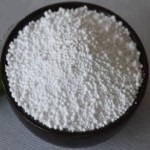
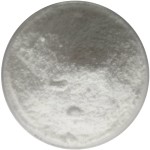
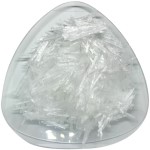
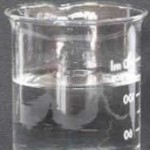
Calcium Chloride Anhydrous CAS Number 10043-52-4
Calcium Chloride Dihydrate CAS Number 10035-04-8
Calcium Chloride Hexahydrate CAS Number 7774-34-7
Calcium Chloride Anhydrous Fused Prills Powder Dihydrate Hexahydrate Desiccant Solution Manufacturer Exporter
For Properties Specifications of Calcium Chloride Anhydrous Fused Prills Powder Dihydrate Hexahydrate Solution Click Properties, Specifications of Calcium Chloride Anhydrous Fused Prills Powder Dihydrate Hexahydrate Solution Manufacturer.
For Uses of Calcium Chloride Click Uses of Calcium Chloride Manufacturer.
For For SDS MSDS Sheet of Calcium Chloride Click SDS Safety Data Sheet MSDS Sheet of Calcium Chloride Manufacturer.
The Properties and Specifications of Calcium Chloride:
Calcium Chloride USP Grade Specifications
Calcium Chloride, Dihydrate. USP
CaCl2-2H2O -- 147.01
Assay: Calcium Chloride contains an amount of CaCl2 equivalent to not less than 99.0 percent and not more than 107.0 percent of CaCl2·2H2O.
Labeling: Where Calcium Chloride is intended for use in hem dialysis, it is so labeled.
Identification: A solution (1 in 10) responds to the tests for Calcium and for Chloride.
pH: between 4.5 and 9.2, in a solution (1 in 20).
Aluminum (where it is labeled as intended for use in hem dialysis: the limit is 1 4g per g.
Iron, aluminum, and phosphate: To a solution (1 in 20) add 2 drops of 3 N hydrochloric acid and 1 drop of PhPh. Then add ammonium chloride–ammonium hydroxide TS, drop wise, until the solution is faintly pink, add 2 drops in excess, and heat the liquid to boiling: no turbidity or precipitate is produced.
Heavy metals: the limit is 0.001%.
Limit of magnesium and alkali salts: Dissolve 1 g in about 50 mL of water, add 500 mg of ammonium chloride, and proceed as directed in the test for Limit of magnesium and alkali salts under Calcium Carbonate, beginning with “heat the solution, and boil for 1 minute”: the weight of the residue does not exceed 5 mg (1.0%).
Organic volatile impurities meets the requirements.
Calcium Chloride BP Ph Eur Dihydrate Grade Specifications
Calcium Chloride BP Dihydrate
CaCl2-2H2O
DEFINITION
Content: 97.0 per cent to 103.0 per cent of CaCl2,2H2O.
CHARACTERS
Appearance: White or almost white, crystalline powder, hygroscopic.
Solubility: Freely soluble in water, soluble in ethanol (96 per cent).
IDENTIFICATION
Solution S (see Tests) gives reaction of chlorides.
It gives the reactions of calcium.
It complies with the limits of the assay.
TESTS
Solution S
Dissolve 10.0 g in carbon dioxide-free water prepared from distilled water and dilute to 100 ml with the same solvent.
Appearance of solution: Solution S is clearand not more intensely colored than reference solution.
Acidity or alkalinity: To 10 ml of freshly prepared solution S add 0.1 ml of phph solution. If the solution is red, not more than 0.2 ml of 0.01 M hydrochloric acid is required to discharge the color and if the solution is colorless, not more than 0.2 ml of 0.01 M sodium hydroxide is required to turn it red.
Sulphates: Maximum 300 ppm.
Aluminium: To 10 ml of solution S add 2 ml of ammonium chloride solution R and 1 ml of dilute ammonia and boil the solution. No turbidity or precipitate is formed.
If intended for use in the manufacture of dialysis solutions, the above test is replaced by the test for Aluminium maximum 1 ppm.
Barium: To 10 ml of solution S add 1 ml of calcium Sulphate solution R. After at least 15 min, any opalescence in the solution is not more intense than that in a mixture of 1 ml of distilled water and 10 ml of solution S.
Iron: Maximum 10 ppm, determined on solution S.
Magnesium and alkali metals: Maximum 0.5 per cent.
Heavy metals: Maximum 20 ppm.
Calcium Chloride Hexahydrate BP Ph Eur Grade Specifications
Calcium Chloride BP Hexahydrate
CaCl2-6H2O
DEFINITION
Content
97.0 per cent to 103.0 per cent of CaCl2-6H2O.
CHARACTERS
Appearance: White or almost white, crystalline mass or colorless crystals.
Solubility: Very soluble in water, freely soluble in ethanol (96 per cent).
It solidifies at about 29C.
IDENTIFICATION
Solution S (see Tests) gives reaction of chlorides.
It gives the reactions of calcium.
It complies with the limits of the assay.
TESTS
Solution S: Dissolve 15.0 g in carbon dioxide-free water prepared from distilled water R and dilute to 100 ml with the same solvent.
Appearance of solution: Solution S is clear and not more intensely colored than reference solution.
Acidity or alkalinity: To 10 ml of freshly prepared solution S add 0.1 ml of phph solution. If the solution is red, not more than 0.2 ml of 0.01 M hydrochloric acid is required to discharge the color and if the solution is colorless, not more than 0.2 ml of 0.01 M sodium hydroxide is required to turn it red.
Sulphates: Maximum 200 ppm.
Aluminium: To 10 ml of solution S add 2 ml of ammonium chloride solution R and 1 ml of dilute ammonia R1 . Heat to boiling. No turbidity or precipitate is formed. If intended for use in the manufacture of dialysis solutions, the above test is replaced by the test for Aluminium : maximum 1 ppm.
Barium: To 10 ml of solution S add 1 ml of calcium Sulphate solution. After at least 15 min, any opalescence in the solution is not more intense than that in a mixture of 1 ml of distilled water and 10 ml of solution S.
Iron: Maximum 7 ppm, determined on solution S.
Magnesium and alkali metals: Maximum 0.3 per cent.
Heavy metals Maximum 15 ppm.
Calcium Chloride Injection as per USP Grade Specifications
Calcium Chloride
Calcium Chloride Injection is a sterile solution of Calcium Chloride in Water for Injection. It contains not less than 95.0 percent and not more than 105.0 percent of the labeled amount of CaCl2-2H2O.
Identification: It responds to the tests for Calcium and Chloride.
Bacterial end toxins: It contains not more than 0.2 USP End toxin Unit per mg of calcium chloride.
pH: between 5.5 and 7.5 in the undiluted Injection, except where the concentration is greater than 1 in 20, in which case this range applies to the Injection diluted with water to yield a concentration of 1 in 20.
Particulate matter: meets the requirements for small-volume injections.
Other requirements: It meets the requirements under Injections 1.
Calcium Chloride FCC Food Grade Specifications
CaCl2 Formula weight, anhydrous 110.98
CaCl2-2H2O Formula weight, dihydrate 147.01
Calcium Chloride
DESCRIPTION
Calcium Chloride occurs as white, hard fragments, granules, or powder. It is anhydrous or contains two molecules of water of hydration. It is deliquescent. It is soluble in water and slightly soluble in alcohol. The pH of a 1:20 aqueous solution is between 4.5 and 11.0.
Function Firming agent.
REQUIREMENTS
Labeling: Indicate whether it is anhydrous or the dihydrate.
Identification: A 1:10 aqueous solution gives positive tests for Calcium and for Chloride.
Assay: Anhydrous: Not less than 93.0% and not more than 100.5% of CaCl2; Dihydrate: Not less than 99.0% and not more than 107.0% of CaCl2·2H2O.
Acid-Insoluble Matter Anhydrous: Not more than 0.02%; no particles per kilogram of sample greater than 2 mm in any dimension.
Arsenic: Not more than 3 mg/kg.
Fluoride: Not more than 0.004%.
Lead: Not more than 5 mg/kg.
Magnesium and Alkali Salts Anhydrous: Not more than 5.0%; Dihydrate: Not more than 4.0%.
Calcium Chloride Solution FCC Food Grade Specifications
Calcium Chloride
DESCRIPTION
Calcium Chloride Solution occurs as a clear to slightly turbid, colorless or slightly colored liquid at room temperature. It is normally available in a concentration range of about 35% to 45% of CaCl2.
Function: Sequestrant; firming agent.
REQUIREMENTS
Identification: When diluted to a concentration of about 1:10 (CaCl2 basis), a sample gives positive tests for Calcium and for Chloride.
Assay: Not less than 90.0% and not more than 110.0%, by weight, of the labeled amount of calcium chloride, expressed as CaCl2.
Alkalinity [as Ca(OH)2]: Not more than 0.3%.
Fluoride: Not more than 0.004%, calculated on the amount of CaCl2 as determined in the Assay.
Lead: Not more than 4 mg/kg, calculated on the amount of CaCl2 as determined in the Assay.
Magnesium and Alkali Salts: Not more than 5.0%, calculated on the amount of Calcium Chloride as determined in the Assay.
Calcium Chloride Dihydrate Analytical Reagent Grade Specifications
CaCl2-2H2O
Formula Weight 147.01
CAS Number 10035-04-8
Calcium Chloride
REQUIREMENTS
Assay: 99.0-105.0% CaCl2-2H2O
pH of a 5% solution: 4.5-8.5 at 25C
MAXIMUM ALLOWABLE
Insoluble matter: 0.01%
Oxidizing substances (as NO3): 0.003%
Sulfate (SO4): 0.01%
Ammonium (NH4): 0.005%
Barium (Ba): 0.005%
Heavy metals (as Pb): 5 ppm
Iron (Fe): 0.001%
Magnesium (Mg): 0.005%
Potassium (K): 0.01%
Sodium (Na): 0.02%
Strontium (Sr): 0.1%
Calcium Chloride Desiccant Reagent Grade Specifications
CaCl2
Formula Weight 110.98
CAS Number 10043-52-4
REQUIREMENTS
Assay: 96.0% CaCl2
MAXIMUM ALLOWABLE
Titrable base: 0.006 meq/g.
The Uses of Calcium Chloride:
Calcium chloride is used as a firming agent in canned vegetables, to firm soybean curds into tofu, and to make a caviar substitute from vegetable or fruit juices. It's commonly used in sports drinks and other beverages, including bottled water, as an electrolyte. It is used for depressing the freezing point. It is also used in domestic and industrial chemical air dehumidifiers. Calcium chloride is often used for de-icing or dust control on gravel roads, in food or as the absorbing agent in desiccants. It is used as a cement hardner and for quick set cement. It is widely used in pharmaceutical industry.
The MSDS-SDS Hazard Statement of Calcium Chloride:
The MSDS-SDS Hazard Statement of Calcium Chloride Anhydrous Dihydrate Hexahydrate Solution Fused Prills Granules Powder Desiccant:
Calcium Chloride SDS, Safety Data Sheet
MSDS, Material Safety Data Sheet 07-Jan-23
1. Product Identification
Product Name & Other Names: Calcium dichloride or Calcium chloride.
CAS No.: Calcium Chloride Anhydrous CAS Number 10043-52-4; Calcium Chloride Dihydrate CAS Number 10035-04-8; Calcium Chloride Hexahydrate 7774-34-7
EINECS EC Number: 233-140-8.
Molecular Weight: Calcium Chloride Anhydrous 110.98; Calcium Chloride Dihydrate 147.02 Calcium Chloride Hexahydrate 219.08
Chemical Formula: CaCl2 Calcium Chloride Anhydrous; CaCl2-2H2O Calcium Chloride Dihydrate; CaCl2-6H2O Calcium Chloride Hexahydrate 219.08
Relevant uses and uses advised against (if any): Laboratory & Industrial use only.
2. Hazards Identification
GHS, Globally Harmonized System Classification in accordance with 29 CFR 1910
Classification according to Regulation (EC) No 1272/2008
Skin irritation (Category 2), H315
Serious eye damage/eye irritation Category 2A, H319
Specific target organ toxicity, single exposure; Respiratory tract irritation Category 3, H335
Labeling according to GHS & Regulation (EC) No 1272/2008
GHS Label Elements 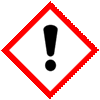 Irritant |
Signal Words: Warning
Hazard statements:
H315: Causes skin irritation.
H319: Causes serious eye irritation.
H335: May cause respiratory irritation.
Precautionary statements:
P261: Avoid breathing dust/ fume/ gas/ mist/ vapors/ spray.
P262: Do not get in eyes, on skin, or on clothing.
P264 Wash skin thoroughly after handling.
P280: Wear protective gloves/protective clothing/eye protection/face protection.
P362: Take off contaminated clothing and wash before reuse.
P302+P352: IF ON SKIN: Wash with soap and water.
P305+P351+P338: IF IN EYES: Rinse cautiously with water for several minutes. Remove contact lenses, if present and easy to do. Continue rinsing.
P332+P313: If skin irritation occurs: Get medical advice/attention.
P337+P313: If eye irritation persists: Get medical advice/ attention.
3. Composition/Information on Ingredients
Product Name & Other Names: Calcium dichloride or Calcium chloride.
CAS No.: Calcium Chloride Anhydrous CAS Number 10043-52-4; Calcium Chloride Dihydrate CAS Number 10035-04-8; Calcium Chloride Hexahydrate 7774-34-7
EINECS EC Number: 233-140-8.
4. First Aid Measures
Always seek medical attention after first aid measures are provided.
Inhalation: Remove to fresh air. If not breathing, give artificial respiration. If breathing is difficult, give oxygen. Get medical attention.
Ingestion: Never give anything by mouth to an unconscious person. Get medical attention.
Skin Contact: Wipe off excess material from skin then immediately flush skin with plenty of water for at least 15 minutes. Remove contaminated clothing and shoes. Get medical attention. Wash clothing before reuse. Thoroughly clean shoes before reuse.
Eye Contact: Immediately flush eyes with plenty of water for at least 15 minutes, lifting lower and upper eyelids occasionally. Get medical attention immediately.
Note to Physician: Symptomatic and supportive treatment is recommended.
5. Fire Fighting Measures
Flammability of the Product: Non-flammable.
Fire Extinguishing Media: Use any means suitable for extinguishing surrounding fire.
Extinguishing Media Not recommended: None specified.
Special Information: In the event of a fire, wear full protective clothing and NIOSH-approved self-contained breathing apparatus with full face piece operated in the pressure demand or other positive pressure mode. At high temperatures under fire conditions, it may produce toxic or irritating fumes. Fire-extinguishing work is done from the windward and the suitable fire-extinguishing method according to the surrounding situation is used.
6. Accidental Release Measures
Personal precautions, protective equipment, and emergency procedures: Ventilate area of leak or spill. Avoid breathing dust/fumes/gas/mist/vapors/spray. Use individual protective equipment (waterproof boots, suitable protective clothing, safety glasses, etc.). Do not approach facing the wind.
Environmental precautions: Do not let the product enter drains, soil, or water sources.
Methods and materials used for containment cleanup procedures and Storage: Contain spilled material. Cover with an inert, non-combustible absorbent material, (e.g. sand, earth, diatomaceous earth, vermiculite). Vacuum or sweep-up and remove to an approved disposal container.
7. Handling and Storage
Precautions for safe handling: Apply according to good manufacturing and industrial hygiene practices. Ensure proper ventilation. In case of insufficient ventilation, wear suitable respiratory equipment. Wash thoroughly after handling. Do not drink, eat, or smoke while handling. Avoid contact with skin, eyes, and clothing. Minimize dust generation. Avoid breathing dust/fumes/gas/mist/vapors/spray. Keep container tightly closed. Avoid ingestion and inhalation. Use individual protective equipment (waterproof boots, suitable protective clothing, safety glasses, etc.).
Conditions for safe storage, including any incompatibilities: Store in cool, dry, and ventilated area away from heat sources and protected from sunlight in tightly closed original container. Keep air contact to a minimum. Store protected from heat, sparks and ignition sources and incompatible materials. Avoid contact with skin and eyes. Avoid inhalation of dust/mist/vapor. Do not store with incompatible materials like strong oxidizing agents, methyl vinyl ether, water, zinc, bromine trifluoride, mixtures of lime and boric acid, barium chloride, and 2-furan percarboxylic acid. When exposed to the atmosphere, it will absorb water and form a solution.
8. Exposure Controls/Personal Protection
Airborne Exposure Limits: None established.
Ventilation System: A system of local and/or general exhaust is recommended to keep employee exposures as low as possible.
Personal Respirators (NIOSH Approved): For conditions of use where exposure to dust or mist is apparent and engineering controls are not feasible, a particulate respirator may be worn.
Skin Protection: Wear protective gloves and clean body-covering clothing.
Eye Protection: Use chemical safety goggles and/or full face shield where dusting or splashing of solutions is possible. Maintain eye wash fountain and quick-drench facilities in work area.
Other Control Measures: Maintain good housekeeping in work area. Handle in accordance with good industrial hygiene and safety practice.
9. Physical and Chemical Properties
Appearance: White crystals or powder or granules or lumps.
Odor: It is odorless.
Odor threshold: Not available.
pH: 5.0 - 9 at 10% solution at 25C (77F)
Relative density: around 1.85
Boiling Point: > 1600C (> 2912F)
Melting Point: 176C (349F) for Calcium Chloride Dihydrate.
Flash point: Not available.
Auto-ignition temperature: Not available.
Decomposition temperature: Not available.
Upper/lower flammability or explosive limits: Not available.
Vapor pressure: Not available.
Vapor density: Not available.
Evaporation rate: Not available.
Flammability (solid, gas): Not available.
Partition coefficient: n-octanol/water: Not available.
Solubility: It is freely soluble in water, exothermic.
Viscosity: Not available.
10. Stability and Reactivity
Stability: Stable under ordinary conditions of use and storage. Substance will pick up moisture from the air and go into solution if exposed in open containers.
Hazardous Decomposition Products: It emits toxic chlorine fumes when heated to decomposition. It may form hydrogen chloride in presence of sulfuric or phosphoric acids or with water at elevated temperatures.
Hazardous Polymerization: Will not occur.
Incompatibilities: Methyl vinyl ether, water, zinc, bromine trifluoride, mixtures of lime and boric acid, barium chloride, and 2-furan percarboxylic acid. Metals will slowly corrode in aqueous calcium chloride solutions. Aluminum (and alloys) and yellow brass will be attacked by calcium chloride.
Conditions to Avoid: Incompatibles.
11. Toxicological Information
Toxicity to Animals: Oral rat LD50: 2301 mg/kg on Anhydrous CaCl2 basis.
Carcinogenicity: No component of this product present at levels greater than or equal to 0.1% is identified as probable, possible or confirmed human carcinogen by IARC.
Mutagenic Effects: Not available.
Developmental Toxicity: Not available.
Reproductive Effects: No information available.
12. Ecological Information
Environmental Toxicity: The material is not considered as environmental hazard.
Environmental Fate: Not biodegrade or bio accumulate.
Results of PBT and vPvB assessment: This substance/mixture contains no components considered to be either persistent, bioaccumulative and toxic (PBT), or very persistent and very bioaccumulative (vPvB) at levels of 0.1% or higher.
13. Disposal Considerations
Whatever cannot be saved for recovery or recycling should be managed in an appropriate and approved waste disposal facility.
14. Transport Information
DOT USA, TDG Canada & ADR/RID Europe: Not Controlled.
IATA/ICAO: Not Controlled.
IMDG/IMO: Not Controlled.
15. Regulatory Information
USA:
SARA 311/312 Hazards: Hazard. See section 2.
California Prop. 65 Components: Not listed.
Section 16 - Additional Information
DISCLAIMER: The information and recommendations set forth herein (hereinafter "Information") are presented in good faith and believed correct as of the date hereof. It is compiled from various sources, and it is not necessarily all inclusive nor fully adequate in every circumstance. In addition, these suggestions should not be confused with nor followed in violation of applicable laws, regulations, rules, or insurance requirements applicable. This SDS MSDS sheet is intended only as a guide to the appropriate precautionary handling of the material by a professionally trained person using this product. Individuals receiving the information must exercise their independent judgment in determining its appropriateness for a particular purpose. This shall not constitute a guarantee for any specific product features and shall not establish a legally valid contractual relationship. In no case shall our company be liable to loss or damages by the product user.Anmol Chemicals & Pharmaceuticals Pvt. Ltd. is an off-shoot of Anmol Chemicals Taloja. It is located in MIDC Taloja and it is manufacturing pharmaceutical grades of API, Excepients, Food grade and Reagent grade chemicals. Anmol Chemicals & Pharmaceuticals Pvt. Ltd. is a several decades old group of companies, engaged in manufacturing, supplying, distributing, wholesale supplies for actual users, retail or small pack supplies for research and development chemicals, fine and speciality chemicals, pharmaceutical excipients, mineral fortifiers in chemically pure, Analytical reagent grade, IP BP USP Ph Eur EP JP and other pharmaceutical grade monograph including FCC Food grade chemicals and Nutraceuticals, Mineral Fortifiers at best prices.
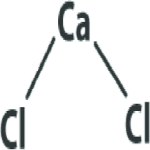
Calcium Chloride Structure
CAS Number 10043-52-4 Anhydrous, 10035-04-8 Dihydrate, 7774-34-7 Hexahydrate, Calcium Chloride Anhydrous Fused Prills Powder Dihydrate Hexahydrate Desiccant Solution Manufacturer Exporter
ANMOL CHEMICALS & PHARMACEUTICALS Pvt. Ltd.
India, USA, Europe, UAE
TELEPHONE: +912223770100
Navi Mumbai, INDIA
e-mail: info(At the rate i.e. @)anmol.org
Copyright. 15-nov-24
We manufacture:
Glacial Acetic Acid Manufacturer
Aluminum Chloride Hexahydrate Anhydrous
Aluminum Chlorohydrate Solution Powder

